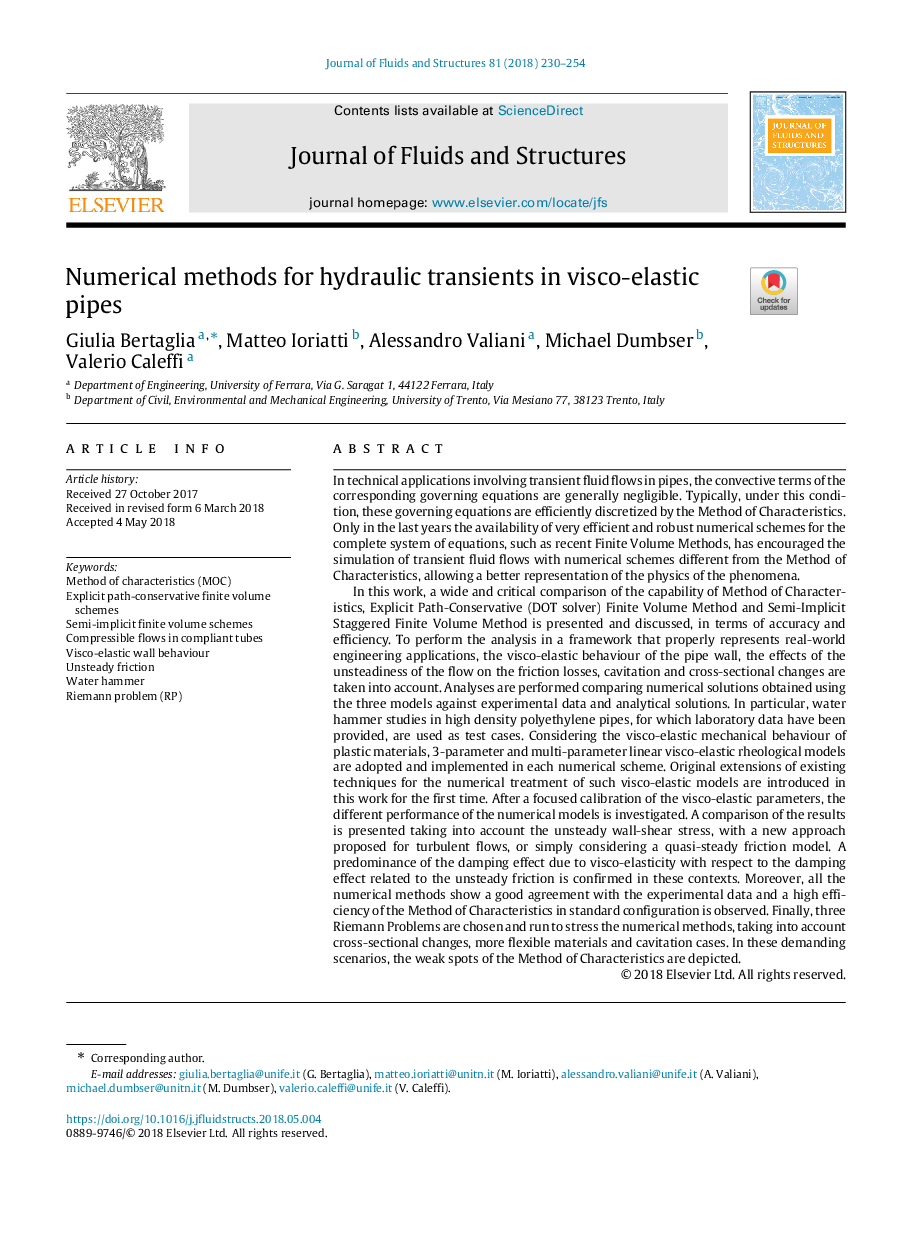| Article ID | Journal | Published Year | Pages | File Type |
|---|---|---|---|---|
| 7175698 | Journal of Fluids and Structures | 2018 | 25 Pages |
Abstract
In this work, a wide and critical comparison of the capability of Method of Characteristics, Explicit Path-Conservative (DOT solver) Finite Volume Method and Semi-Implicit Staggered Finite Volume Method is presented and discussed, in terms of accuracy and efficiency. To perform the analysis in a framework that properly represents real-world engineering applications, the visco-elastic behaviour of the pipe wall, the effects of the unsteadiness of the flow on the friction losses, cavitation and cross-sectional changes are taken into account. Analyses are performed comparing numerical solutions obtained using the three models against experimental data and analytical solutions. In particular, water hammer studies in high density polyethylene pipes, for which laboratory data have been provided, are used as test cases. Considering the visco-elastic mechanical behaviour of plastic materials, 3-parameter and multi-parameter linear visco-elastic rheological models are adopted and implemented in each numerical scheme. Original extensions of existing techniques for the numerical treatment of such visco-elastic models are introduced in this work for the first time. After a focused calibration of the visco-elastic parameters, the different performance of the numerical models is investigated. A comparison of the results is presented taking into account the unsteady wall-shear stress, with a new approach proposed for turbulent flows, or simply considering a quasi-steady friction model. A predominance of the damping effect due to visco-elasticity with respect to the damping effect related to the unsteady friction is confirmed in these contexts. Moreover, all the numerical methods show a good agreement with the experimental data and a high efficiency of the Method of Characteristics in standard configuration is observed. Finally, three Riemann Problems are chosen and run to stress the numerical methods, taking into account cross-sectional changes, more flexible materials and cavitation cases. In these demanding scenarios, the weak spots of the Method of Characteristics are depicted.
Related Topics
Physical Sciences and Engineering
Engineering
Mechanical Engineering
Authors
Giulia Bertaglia, Matteo Ioriatti, Alessandro Valiani, Michael Dumbser, Valerio Caleffi,
